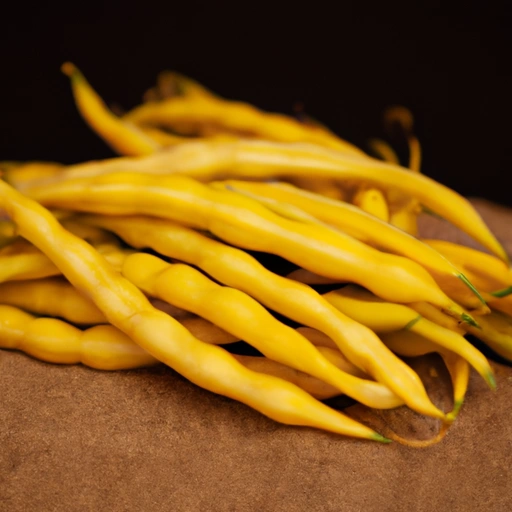Wax Bean
Description

Wax beans, often mistaken for a pale variant of the green bean, are an entirely separate cultivar of bean known for their yellow pods. This legume is a member of the Phaseolus vulgaris family, the same species as the common green bean. Wax beans provide not just vibrant color to dishes but also a slightly different flavor and texture. They are typically harvested while the beans inside are still small, leading to their tender and delicate consistency.
Common uses
Wax beans are commonly used in salads, stir-fries, and as side dishes. They are a staple in many European, American, and Asian cuisines, where they add a burst of color and a touch of sweetness to any meal. Wax beans are also popular for pickling, which preserves their texture and flavor.
Nutritional value
Calories
Wax beans are low in calories, with approximately 31 calories per 100 grams (about 3.5 ounces).
Protein
They offer a modest amount of protein, providing around 1.8 grams per 100 grams (3.5 ounces).
Fat
Wax beans are virtually fat-free, containing less than 0.5 grams of fat per 100 grams (3.5 ounces).
Carbohydrates
These beans contain about 7 grams of carbohydrates per 100 grams (3.5 ounces).
Vitamins
They are a good source of vitamins, particularly vitamin C and some of the B vitamins.
Minerals
Wax beans provide essential minerals such as potassium, iron, and calcium.
Health benefits
Consuming wax beans can contribute to overall health due to their high fiber content, which aids in digestion, and their array of vitamins and minerals that support various bodily functions. Their antioxidant properties can also help in combating oxidative stress.
Potential risks
As with any food, overconsumption of wax beans may lead to gastrointestinal discomfort for some individuals. Additionally, those who are sensitive to legumes should consume them with caution.
Common recipes
Recipes featuring wax beans range from the classic American three-bean salad to European dishes such as wax beans almondine. In Asia, they are often found in spicy stir-fries and curries.
Cooking methods
Popular cooking methods include blanching, steaming, and sautéing. Wax beans can also be canned or pickled for long-term storage.
Pairing with other ingredients
These beans pair well with a variety of flavors, such as garlic, almonds, cherry tomatoes, and fresh herbs like parsley and dill. They also complement proteins like chicken, fish, and tofu.
Summary
Wax beans are a versatile and nutritious ingredient that can be used in a wide range of recipes. They are appreciated for their mild, buttery flavor and firm texture, making them a popular choice for cooks around the world. Whether eaten raw in a refreshing salad, lightly sautéed with herbs, or preserved through pickling, wax beans are a delightful addition to any dish.